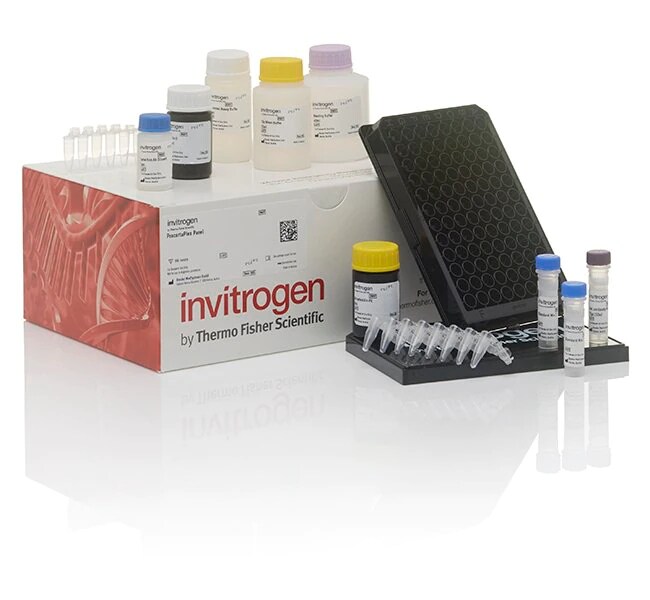
The ProcartaPlex Human Liver Toxicity Panel 2 5plex enables hepatotoxicity research by analyzing six protein targets in a single well using Luminex xMAP technology. Simultaneous detection of these targets can help gain information about liver function and hepatotoxicity during drug development studies.
The panel is provided in a ready-to-use format with individual vials of capture and detection reagents formulated at 1X concentration, requiring less pipetting and experimental setup. It is not combinable with simplexes or other panels. It complements the ProcartaPlex Human Liver Toxicity Panel 1 6plex (Cat. No. EPX060-15857-901) that provides five additional protein targets in the same research area.
ProcartaPlex preconfigured panels are extensively tested for analyte combinability, interference, and cross-reactivity to provide the highest level of validation and precision. All ProcartaPlex panels are supplied with the necessary reagents to perform the assay.
Targets:CYP2D6, CYP2C19, CYP2E1, B2M, GAPDH
About ProcartaPlex assays for the Luminex platform
ProcartaPlex assays utilize Luminex xMAP (multianalyte profiling) technology for the simultaneous detection and quantitation of up to 80 protein targets in a single 25–50 μL sample—from plasma, serum, cell culture supernatants, and other bodily fluids.
The Luminex MagPlex superparamagnetic microsphere beads in the ProcartaPlex assay are internally dyed with precise proportions of red and infrared fluorophores to create 100 spectrally unique signatures that can be identified by the Luminex xMAP detec¬tion systems (Luminex 200, FLEXMAP 3D, and MAGPIX systems). Similar to a sandwich ELISA, the ProcartaPlex assay uses matched antibody pairs to identify the protein of interest. In a multiplexed assay, each spectrally unique bead is labeled with antibodies specific for a single target protein, and bound proteins are identified with biotinylated antibodies and streptavidin–R-phycoerythrin (RPE). The conjugation of protein-specific antibodies to a distinct bead allows for analysis of multiple targets in a single well.
The most significant difference between a ProcartaPlex assay and ELISA is that the capture antibody in the ProcartaPlex assay is conjugated to a magnetic bead and not adsorbed to the microplate well, so the ProcartaPlex assay reagents are free-floating in the solution. For detection, the Luminex 200 instrument, for example, contains two lasers, one to distinguish the spectral signature of each bead and the second to quantify the amount of RPE fluorescence, which is proportional to the amount of protein present in the sample. ProcartaPlex multiplex assays can profile more target proteins using significantly less sample in the same time that it takes to perform a traditional sandwich ELISA.
ProcartaPlex multiplex panels are available in multiple formats across six species (human, mouse, rat, nonhuman primate, porcine, and canine). Visit thermofisher.com/procartaplex for more information and available products.
| Code | Description |
|---|---|
| EPX050-15858-901 | Catalog Number: EPX050-15858-901 |

